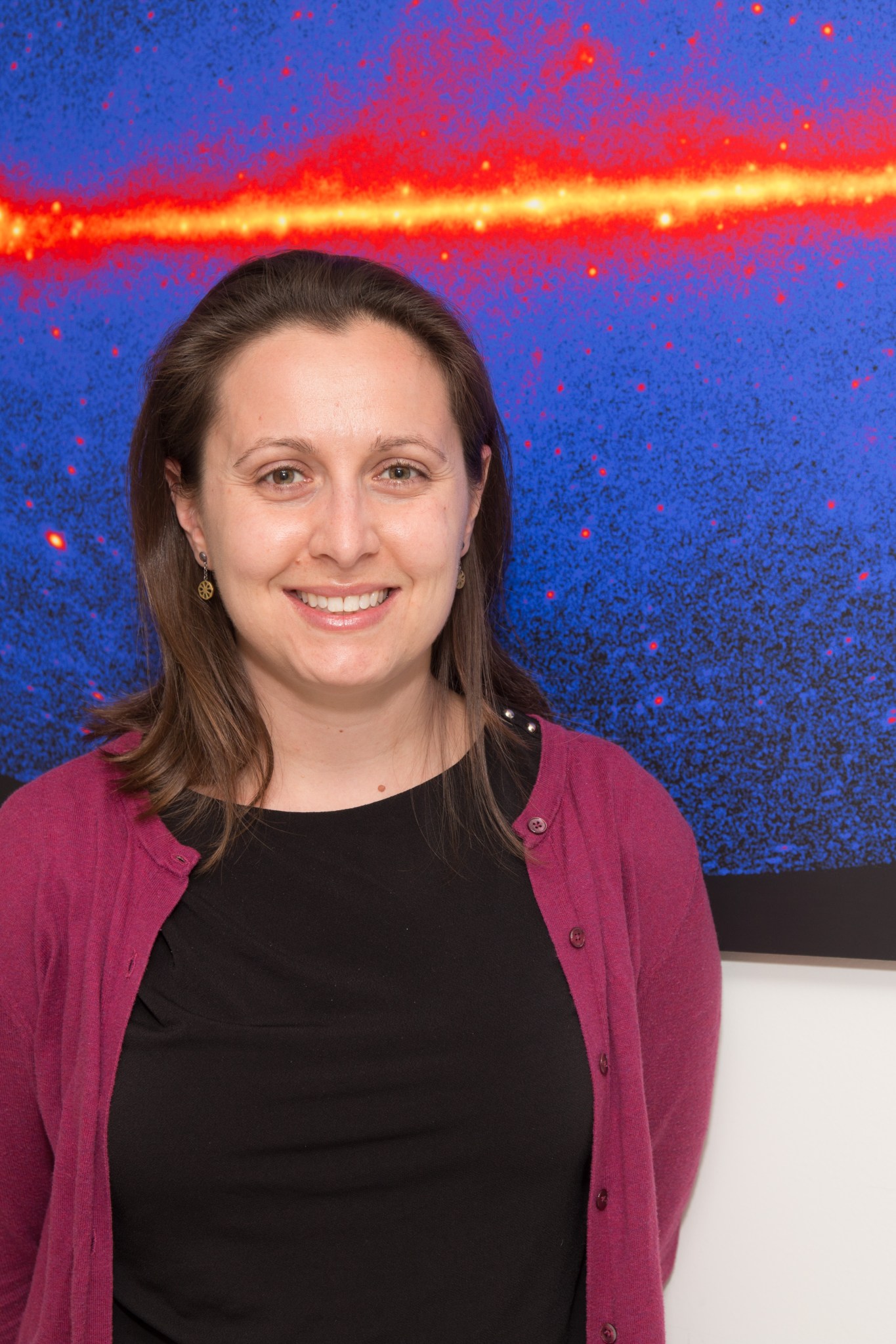Research astrophysicist Regina Caputo puzzles out how the universe works by studying the most extreme events in the cosmos.
Name: Regina Caputo
Title: Research Astrophysicist
Organization: Astroparticle Physics Laboratory (Code 661)

What do you do and what is most interesting about your role here at Goddard?
I'm a research astrophysicist in the particle astrophysics lab at Goddard. I'm really interested in the most extreme events that happen in the universe, so I work on current gamma-ray missions and develop technology for future gamma-ray telescopes.
The most exciting part of my work is trying to figure out how the universe works and how it got the way it is today.
What is your educational background?
In 2006, I got my bachelor's degree in engineering physics from the Colorado School of Mines. Then, in 2011 I got my Ph.D. in particle physics from Stony Brook University.
I've always been inclined to bridge the gap between science and engineering, so my undergraduate education was where I learned to build things, develop instruments, and analyze data. Then, through my Ph.D. program, I started trying to understand the fundamental building blocks of matter. Eventually, I found my way to astro-particle physics. Particles on the ground are cool, but particles in space are even cooler!
What brought you to Goddard?
I arrived at Goddard in 2017, and I think it was a natural confluence of building telescopes, doing high energy astrophysics, and working in a collaborative environment.
What were the most exciting moments of your career?
I am very fortunate because there have been a couple exciting moments. I was a student working on CERN's Large Hadron Collider when the Higgs Boson was discovered, so that was really exciting.
Then, after I had gotten into particle astrophysics, we discovered in 2017 that merging neutron stars created gravitational waves and gamma-ray bursts. Around the same time, we discovered an active galaxy that produced neutrinos with ultra-high-energy gamma-ray flares. This was like the birth of multi-messenger astrophysics, so it felt like a whole new era of discovery. I really felt like the universe was telling me something.
How does your work involve different teams?
I'm on a few different teams on different scales. On the science side, I'm a part of the Fermi Large Area Telescope (LAT) collaboration - an international group of scientists supporting Fermi, analyzing data, and doing science.
I'm also a Swift Observatory project scientist. I support the mission by making sure it's fulfilling its obligations to the public and various stakeholders.
The technology development teams are the ones that I'm leading in preparation for a next-generation gamma-ray telescope. I have a group of postdocs, students, and other scientists - 10 or 15 people around the world. We are developing and characterizing silicon CMOS detectors, called AstroPix, to make sure that they meet our requirements, and think about the next steps to implement them in different experiments.
The other team, called Compton-Pair Telescope (ComPair), built a prototype gamma-ray telescope that was launched as a balloon payload last summer. Right now, we're working on the next generation of it.

What is challenging about your position?
I think one of the most challenging things is communicating effectively with an international group of people. You have to be like an events coordinator to make sure people have the resources they need.
What role do you serve for early career scientists?
I think it's really important that scientists think about the next generation of scientists and technically minded people. It's really important to me to make sure that we are giving junior folks the field opportunities they need to achieve their goals.
What science outreach do you do?
I really enjoy science outreach, so I like to jump in whenever there's an opportunity - like Black Hole Week, career days, or public talks. I like to be able to say, "Hey, you're paying us to explore the universe - here's what we found!"
What goals do you have for the future?
It would be so cool to see the detectors we develop to be in a next-generation gamma-ray telescope that flies and takes data. It's a hard goal, but hey, I shoot for the stars.
By Laine Havens
NASA's Goddard Space Flight Center in Greenbelt, Md.

Conversations With Goddard is a collection of Q&A profiles highlighting the breadth and depth of NASA's Goddard Space Flight Center's talented and diverse workforce. The Conversations have been published twice a month on average since May 2011. Read past editions on Goddard's "Our People" webpage.






